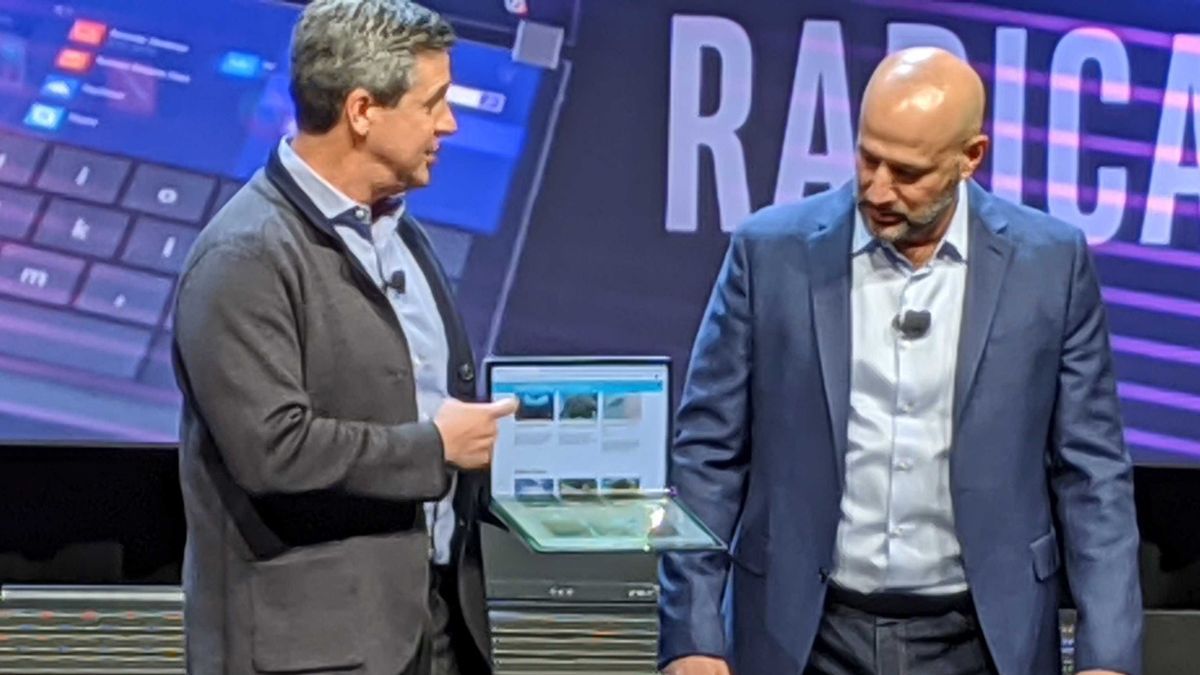Intel reveals Horseshoe Bend, a bizarre concept with a foldable 17-inch OLED display
The concept runs Intel's new Tiger Lake platform

Intel showed off the first foldable device with a 17-inch display at CES 2020. Named Horseshoe Bend, the latest Project Athena device runs on Intel's new Tiger Lake platform.
The device is similar to Lenovo's ThinkPad X1 Fold in that it lets you view content on a full-sized panel or two separate displays when folded. When closed, the device has the same footprint as a 13.3-inch laptop.
Horseshoe Bend flexible OLED display
The main difference between the X1 Fold and Horseshoe Bend is that Intel's concept has a larger 17.3-inch OLED display. That panel has a 3:2 aspect ratio, which gives users more vertical real estate to read documents or see content on websites.
Horseshoe Bend and Tiger Lake
The Horseshoe Bend concept Intel showed on stage was running its upcoming Tiger Lake processor. The platform includes Xe graphics architecture that enables HD performance gaming on integrated GPUs. Intel ran a Warframe demo at its press conference. The frame rates weren't perfect but the demo showed that the game was playable on integrated graphics.
What this means for laptops
Horseshoe Bend is a concept that will never find its way into retail stores. Instead, it was created to show what laptop makers are capable of creating with Intel hardware. If 13-inch foldable PCs like the ThinkPad X1 fold or Dell's Concept Ori catch on, then it will only be a matter of time before manufacturers offer a variety of display sizes in the foldable form factor.
Stay in the know with Laptop Mag
Get our in-depth reviews, helpful tips, great deals, and the biggest news stories delivered to your inbox.
Phillip Tracy is the assistant managing editor at Laptop Mag where he reviews laptops, phones and other gadgets while covering the latest industry news. After graduating with a journalism degree from the University of Texas at Austin, Phillip became a tech reporter at the Daily Dot. There, he wrote reviews for a range of gadgets and covered everything from social media trends to cybersecurity. Prior to that, he wrote for RCR Wireless News covering 5G and IoT. When he's not tinkering with devices, you can find Phillip playing video games, reading, traveling or watching soccer.
